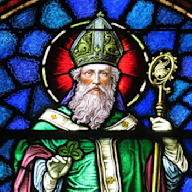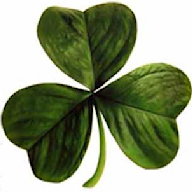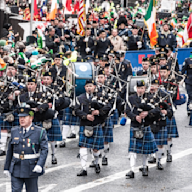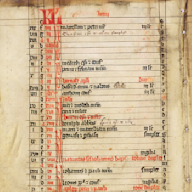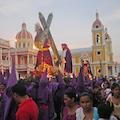Search results
Saint Patrick's Day, or the Feast of Saint Patrick (Irish: Lá Fhéile Pádraig, lit. 'the Day of the Festival of Patrick'), is a religious and cultural holiday held on 17 March, the traditional death date of Saint Patrick (c. 385 – c. 461), the foremost patron saint of Ireland. Saint Patrick's Day was made an official Christian feast day in the early 17th century and is observed by the ...
St. Patrick’s Day, feast day (March 17) of St. Patrick, patron saint of Ireland. Born in Roman Britain in the late 4th century, he was kidnapped at the age of 16 and taken to Ireland as a slave. He escaped but returned about 432 ce to convert the Irish to Christianity.
Oct 27, 2009 · St. Patrick’s Day is a global celebration of Irish culture that takes place annually on March 17, the anniversary of the patron saint of Ireland's death in the fifth century. The holiday has ...
St. Patrick’s Day is a global celebration of Irish culture that takes place annually on March 17, the anniversary of the patron saint of Ireland's death in the fifth century. The Irish have ...
Saint Patrick (Latin: Patricius; Irish: Pádraig [ˈpˠɑːɾˠɪɟ] or [ˈpˠaːd̪ˠɾˠəɟ]; Welsh: Padrig) was a fifth-century Romano-British Christian missionary and bishop in Ireland.Known as the "Apostle of Ireland", he is the primary patron saint of Ireland, the other patron saints being Brigid of Kildare and Columba.Patrick was never formally canonised by the Catholic Church, having ...
Oct 14, 2009 · St. Patrick was born in Great Britain —not Ireland—to wealthy parents near the end of the fourth century. He is believed to have died on March 17, around 460 A.D. Although his father was a ...
Feb 1, 2019 · St. Patrick’s Day is a cultural and religious holiday held annually on March 17. Named after the patron saint of Ireland, Saint Patrick, the day celebrates Irish heritage with food, ...
St. Patrick (flourished 5th century, Britain and Ireland; feast day March 17) was the patron saint and national apostle of Ireland. He is credited with bringing Christianity to Ireland and was probably responsible in part for the Christianization of the Picts and Anglo-Saxons.
St. Patrick’s Day—observed every March 17—is packed with parades, good luck charms, and all things green. The event started as a religious holiday, but over time it’s become a celebration of Irish culture.
March 17 began as a feast day in observance of St. Patrick, the patron saint of Ireland. Over time, the holiday evolved into a secular celebration of Irish culture, green beer, and anything with a shamrock on it. Irish immigrants to the United States were largely responsible for the transition, and in the 21st century, the holiday was ...

